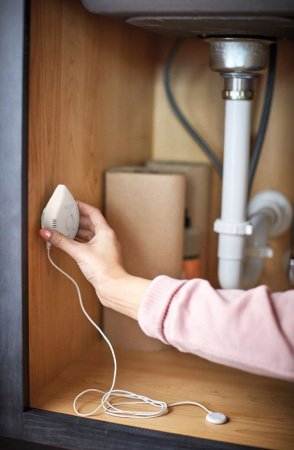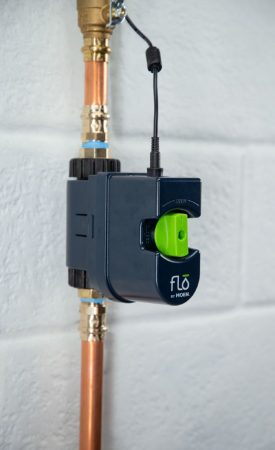
By Treena Hein
Installing the Smart Home
Canadian Contractor Smart House canada contractor smart homeStay up to date to integrate smart home appliances, pipe leak detection systems and more.
The “smart home.” It’s becoming common to see this concept pop up in news stories, ads and in personal conversations. In this era of being super-connected to our homes (and to our cars, family members, pets and so on), it’s therefore imperative that contractors stay up-to-date about installing smart home technology – or be edged out by the competition.
Indeed, according to Ian Bryant, senior director of strategic partnerships at CEDIA (the global trade association for companies that manufacture and integrate home technology), the outlook for smart home technology post-COVID is very positive.
General guidelines
Among the many considerations that Bryant says contractors need to keep in mind when installing smart home systems is the maintenance of proper environmental conditions. He asserts that installers and designers alike should be educated on the basics of how to support proper device function in normal conditions as well as extreme.
“Heat and moisture are the number one culprit for electronic failure,” Bryant explains. “It’s always recommended to have an MEL (main equipment location) for distributed or ‘whole-home’ electronics.” (Distributed and whole-home are just like they sound – distributed refers to individual applications and ‘whole-home’ refers to systems that run throughout a home, like security.)
Kitchen appliances

Smart water detectors, small sensors that can be placed anywhere in a home, sense the presence of water outside of a pipe, freezing temperatures and high humidity.
Installation of smart home appliances (fridge, stove, washer, dryer etc.) is similar to a conventional appliance, notes Olivier Tetreault, Signature brand ambassador. For the company’s smart home Signature Kitchen Suite appliances, the Wi-Fi PCB is protected by a coating of resin against humidity.
Bryant adds that the only way installation of a smart home appliance might vary from that of a conventional is if the appliance has a hard wired ethernet connection (more on that later). “Most rely on Wi-Fi, so this is not an issue. And for even those that do, it’s very simple to plug in a data cable,” he says. “The difference is, after the install, getting it set up on the network, connected to a smart speaker system like Alexa or Google or a control system and then training the customer to get the most out of the features.”
Water leaks and monitoring
Even before the suspension in winter getaways due to COVID, more and more vacationers wanted a way to prevent water pipes bursting in their homes due to electrical outages or other unforeseen circumstances during their time away. According to plumbing system manufacturer, Moen, water leaks in the home are one of the leading causes of preventable insurance claims each year, with the average claim for non-weather-related water damage costing nearly $10,000.
Moen therefore developed the Flo smart water security system to detect leaks. The system can also be used to monitor water usage.
It has two main parts that can be used individually or together. One is a water shutoff, installed on the water line entering the home. The other part of the system are smart water detectors: any number of small sensors that can be placed anywhere in a home. If these detectors
sense the presence of water outside of a pipe, or freezing temperatures or high humidity, they will alert users through a notification in the Moen app and also make a sound in the home.
The basis of everything: Wi-Fi
Bryant highly recommends that whoever is doing your Wi-Fi networking configuration has the proper industry certifications and training. However, here are a few basics to always keep in mind.
With regard to wireless devices and controllers, Bryant notes that the higher the frequency, the less distance it can travel and the harder it is to penetrate obstacles like walls and insulation. And the closer your devices are to the gateway the better.
It’s also very important not to overpopulate the home with Wi-Fi connectivity without having a professional configure them into a “mesh” network. Bryant also strongly recommends hard wiring everything that has an ethernet jack.
Smart homes of the future
“Nothing is ‘future proof,’ but you can be ‘future ready’,” Bryant says. He also recommends that contractors speak to their customers about equipping their smart homes for years to come. That is, make sure there is cable already installed and ready to handle potential future applications.


Leave a Reply